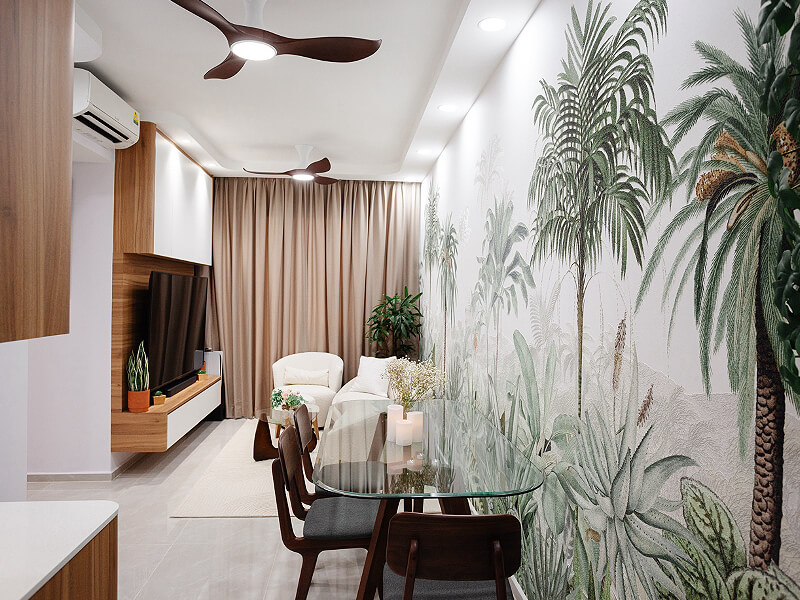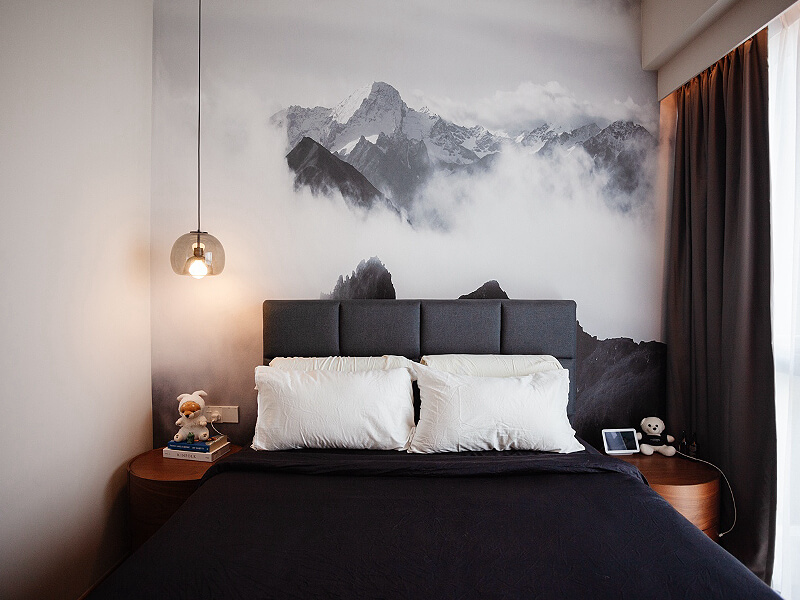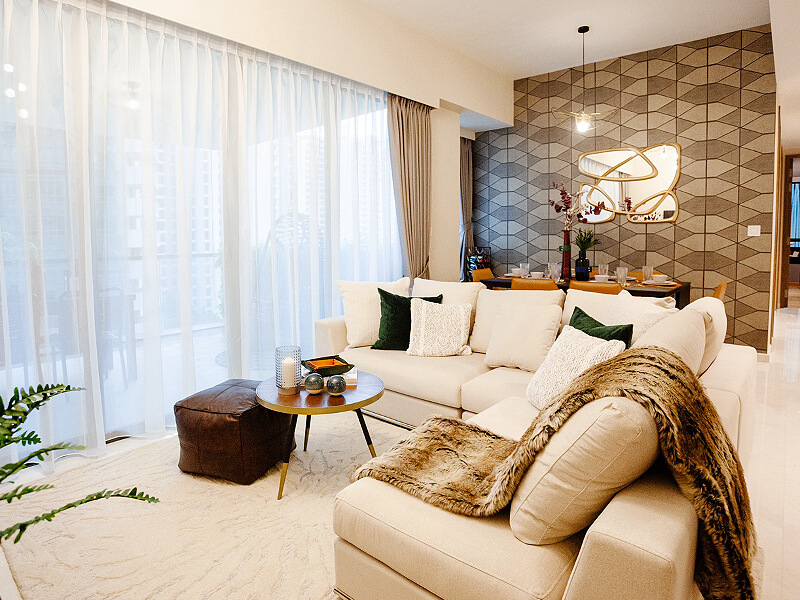In interior design, every element in a room contributes to its overall ambience and aesthetic appeal, from the furnishings to the lighting arrangement and even the paint or wallpapers in Singapore. Among these, curtains often go unnoticed as a powerful design feature.
While many view them as mere functional additions or an afterthought, curtains are one of the simplest yet most effective tools for transforming a space. For instance, have you ever walked into a room and felt an instant sense of cosiness, elegance, or warmth? Chances are, the curtains played a significant role in creating that atmosphere. Therefore, the right window treatment can be your secret weapon in making any room feel complete.
In this article, we’ll explore five expert tips for using curtains to elevate the design of spaces, whether they’re modern, minimalist, traditional, or any style in between.
1. Use Curtains to Define Space
Have you ever considered how curtains can define and shape a space? While open-concept living remains a popular trend, there are times when dividing a large area into smaller, functional zones becomes essential. This is where curtains shine.
Curtains are the perfect solution for spaces that need sufficient separation but without the permanence of a wall. For instance, they can divide a sleeping area from the rest of a studio apartment or elegantly frame a dining area in a larger home. Moreover, curtains can even carve out a cosy reading nook in a living room.
But curtains are more than just practical space dividers. They can add drama and sophistication. Imagine a pair of heavy velvet drapes pulled aside to unveil a stately dining room, demarcating not just physical boundaries but also setting the tone for the atmosphere. When leveraging curtains for this purpose, take extra care when considering which type of fabric will be best suited for the space you have in mind both in function and aesthetics.
2. Add Textures and Patterns
While curtains are primarily functional in nature, they also offer an excellent opportunity to introduce texture and pattern into a room’s design—especially when working with a neutral colour palette. Textural fabrics like silk or linen bring tons of depth and richness to a space that ultimately helps create an overall sense of luxury and warmth. Meanwhile, patterned curtains can act as a focal point, anchoring the room’s colour scheme. Whether it’s florals, geometrics, or abstract designs, curtains with bold patterns can infuse personality and vibrancy into your décor.
When selecting patterns, prioritise balance above all else. If your walls or furniture feature bold patterns, delegate your curtains to a more complementary role and stick to plain or subtle patterns to avoid visual clutter. Conversely, if the room’s design is more subdued, don’t hesitate to let the curtains steal the show with an eye-catching design or perhaps make them a feature wall in lieu of a tastefully designed Singapore wallpaper.
3. Enhance Natural Light
Natural light is one of the most valuable assets in interior design. With the right curtains, you can enhance the natural lighting in a room by either amplifying its brightness or creating a dim, cosy ambience. Choosing the right fabric and colour allows you to control the light and transform the mood of any space.
For rooms that crave natural light, sheer curtains are your best friend. These translucent fabrics allow sunlight to filter through while maintaining a sense of privacy. Light-coloured curtains in whites, creams, or pastels further reflect natural light, brightening up the room and making it feel airy and inviting.
Conversely, if you’re looking to cultivate warmth and intimacy, opt for heavier fabrics in darker shades. These curtains are ideal for bedrooms or media rooms where blocking out light is essential for creating a restful or focused atmosphere.
4. Play with Length and Layering
The length of your curtains plays a crucial role in shaping how people perceive the room’s proportions. Long, floor-to-ceiling curtains can make a space feel taller and more grand, while shorter curtains that rest above the window sill create a more casual and compact look.
Layering curtains is another brilliant strategy to elevate your design. For starters, combining sheer curtains with heavier drapes offers both functionality and style. During the day, sheer curtains let in natural light while maintaining privacy while at night, closing the heavier drapes creates a snug, cocoon-like ambience. Lastly, layering is a perfect way to inject extra depth and visual intrigue to any space. To achieve this, mix textures, patterns, and colors in your layers to create a dynamic effect that ties the room’s aesthetic together.
5. Use Curtains as a Statement Piece
Finally, you can think of curtains as a powerful design statement as they can serve as the key feature that ties everything together in certain rooms. This approach works particularly well in minimalist interiors, where vibrant colors or eye-catching patterns can break up the simplicity and add interest. The key here is that curtains chosen as statement pieces should not dominate the room but rather complement its overall design and composition.
As such, it’s recommended to choose colors and patterns that harmonise with the rest of the room. For example, select a subtle tone that complements a feature wall without competing with it. Don’t worry about colour or pattern clashes—when chosen thoughtfully, these curtains will create a striking yet pleasing effect, arresting the eye in a way that feels balanced and cohesive.
Conclusion
Hopefully, you now understand that curtains are more than just functional window coverings but rather an essential design tool with great flexibility. In fact, curtains are so integral to interior design that a room can feel incomplete without them. So, next time you’re planning a room, ask yourself: “What role will the curtains play in this space?” By recognising the potential of curtains beyond mere window dressings, you’ll discover endless possibilities for how they can elevate every room in your residence.







